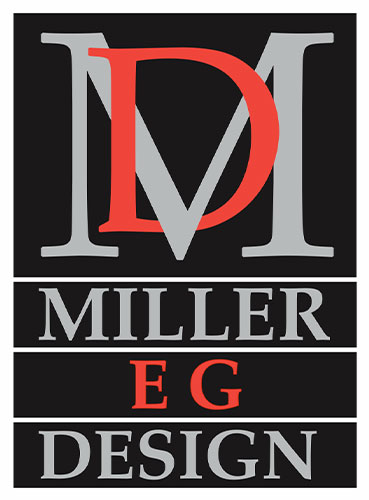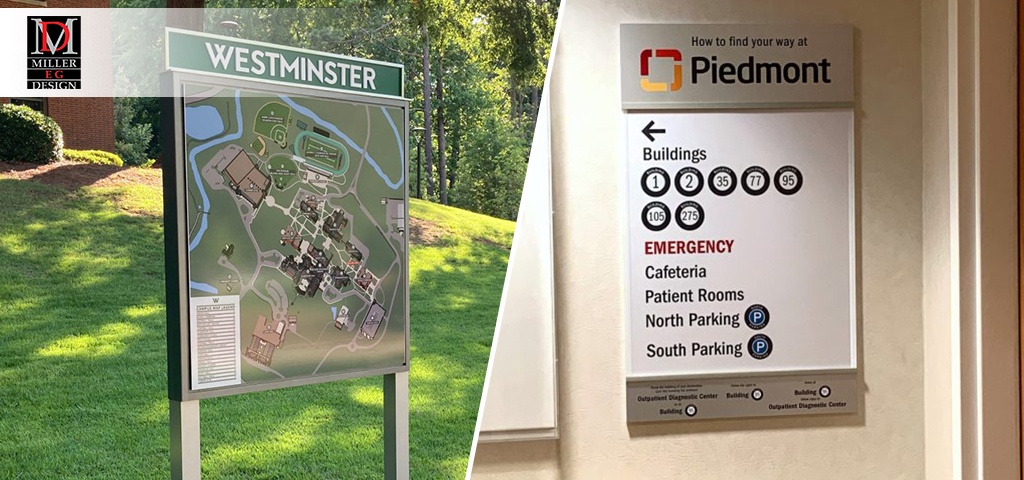In today’s fast-paced world, accessibility and inclusivity are more important than ever. For businesses, public spaces, and institutions, ensuring that people of all abilities can navigate their environments efficiently is essential. That’s where smart wayfinding comes in. At Miller EG Design, we specialize in creating innovative wayfinding solutions that enhance accessibility and inclusivity, making spaces more user-friendly for everyone.
What is Smart Wayfinding?
Smart wayfinding refers to an intuitive navigation system that uses digital and physical tools to help individuals move through a space efficiently. It includes clear signage, digital directories, tactile maps, mobile applications, and interactive kiosks—all designed to make navigation seamless for individuals with diverse needs.
Traditional signage often fails to meet the needs of people with disabilities. Smart wayfinding bridges this gap by integrating accessible design principles, cutting-edge technology, and user-focused solutions to create a more inclusive experience.
How Smart Wayfinding Enhances Accessibility
1. Assisting Individuals with Visual Impairments
For individuals with vision impairments, traditional signs are often ineffective. Smart wayfinding systems incorporate braille signage, tactile maps, and voice-activated navigation to enhance accessibility. Additionally, mobile apps with audio descriptions and real-time navigation enable visually impaired users to receive step-by-step directions to their destination.
2. Supporting Individuals with Mobility Challenges
Navigating large spaces, such as airports, hospitals, and office buildings, can be challenging for those using wheelchairs, walkers, or mobility aids. Smart wayfinding solutions provide:
- Interactive maps that highlight wheelchair-accessible routes
- Automated doors and elevators clearly marked with accessibility signs
- Real-time traffic updates in large facilities to reduce congestion
By prioritizing mobility-friendly routes and easy access points, businesses create a welcoming and accessible environment.
3. Helping Neurodivergent Individuals
Individuals with autism, ADHD, or other neurodivergent conditions often experience sensory overload in crowded or complex environments. Smart wayfinding can address these challenges through:
- Visual cues and color-coded pathways that simplify navigation
- Quiet zones and calming spaces indicated on maps
- Predictable and structured layouts to reduce confusion and anxiety
By implementing these features, businesses and public spaces can provide a stress-free and accessible experience for neurodivergent individuals.
4. Language and Communication Inclusivity
Smart wayfinding also enhances accessibility for individuals who speak different languages or have communication difficulties. Features such as:
- Multilingual digital directories
- Pictograms and universally recognized symbols
- Text-to-speech applications
ensure that people of all backgrounds can understand and navigate a space with ease.
The Role of Technology in Smart Wayfinding
Advancements in technology have made wayfinding more efficient and adaptable than ever. At Miller EG Design, we integrate AI-driven navigation, QR codes, RFID technology, and mobile-responsive platforms into our wayfinding systems to ensure accessibility for all users.
1. Mobile Wayfinding Apps
Mobile apps provide real-time navigation assistance, allowing users to customize their routes based on accessibility needs. These apps can also integrate with voice assistants like Siri or Google Assistant for hands-free operation.
2. Digital Signage and Interactive Kiosks
Modern digital signage and touch-screen kiosks provide on-demand navigation support. They can be customized to display accessible routes, emergency exits, and important facility information in multiple languages and formats.
3. Augmented Reality (AR) and AI-Powered Assistance
AR overlays can provide step-by-step virtual guidance, while AI-powered assistants can offer personalized navigation support through chatbots or voice-activated features.
The Benefits of Smart Wayfinding for Businesses
Investing in smart wayfinding systems benefits businesses and organizations by:
✅ Enhancing customer experience – Visitors can navigate spaces easily, leading to higher satisfaction.
✅ Improving brand reputation – Commitment to accessibility and inclusivity strengthens a company’s brand image.
✅ Increasing foot traffic – Accessible spaces attract a broader audience, including individuals with disabilities.
✅ Ensuring compliance – Smart wayfinding helps businesses meet ADA (Americans with Disabilities Act) regulations and other accessibility standards.
Miller EG Design: Your Partner in Smart Wayfinding Solutions
At Miller EG Design, we are dedicated to creating inclusive, user-friendly spaces through cutting-edge wayfinding solutions. Whether you need accessible signage, digital navigation systems, or a complete wayfinding overhaul, we can help you design a system that enhances accessibility and inclusivity for everyone.
Visit us at 315 Northpoint Pkwy SE Suite F, Acworth, GA 30102, or call us at (404) 947-6448 to learn how we can transform your space with smart, inclusive wayfinding solutions today!

